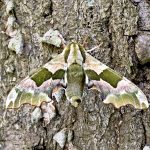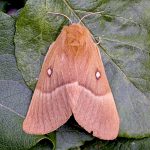Britain is home to a great variety of moths – over 2,500 species – varying in size from tiny ‘micro-moths’ to hawk-moths. In fact, the Lepidoptera, the great order of insects that includes butterflies and moths, is one of the largest, with around 180,000 species worldwide. It is also one of the most important: many moths are pollinators, but others have caterpillars that can be pests.
At Natural Surroundings, regular moth trapping over many years has produced a list of over 700 species of moth (compared with just 28 species of butterfly), including many that are strikingly beautiful.
Encourage moths to live and breed in your garden. A wide variety of plants, but especially British natives, and including trees and shrubs, will provide food for the caterpillars. Leaf mould, compost heaps, habitat piles, and undisturbed out-of the way corners will provide safe places for their larvae to pupate (the astonishing process whereby the caterpillar’s body is broken down into a liquid ‘soup’ and then rebuilt as the adult moth). A wide variety of flowers will provide nectar for the adults. In fact, many plants have specifically evolved to attract moths. White, night-scented flowers are a clue that their pollinator will be a moth, as are long, tubular flowers. Finally, don’t forget that quite a few moths are day-flying, and these often have their favourite flowers too.
NATURAL SURROUNDINGS
Norfolk's Wildlife-Gardening & Wildflower Centre: Nursery, Gardens & Café




